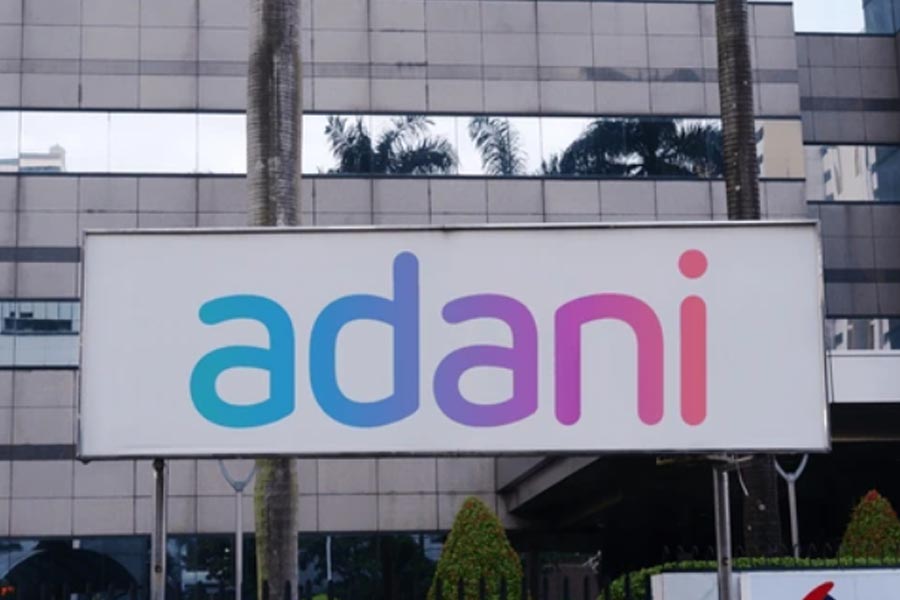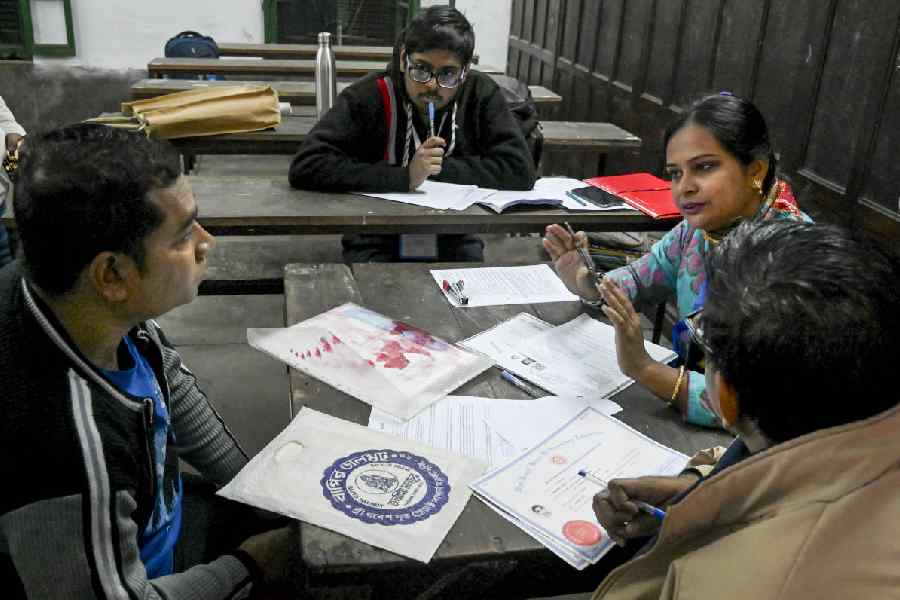 |
| The Madhyamik Siksha Kendra in Rohini. Telegraph picture |
Siliguri, June 18: A structure made of bamboo and tin, which has recently replaced tarpaulin, and a handful of students are all that exists of a government high school in Rohini forcing children to do a daily 11-km trek for post-primary education.
After all, guardians don’t want their children to attend Madhyamik Shiksha Kendra, which cannot withstand rain and storm and can be risky in monsoon. The school, the first government institution in Rohini, 25km from here, is a wobbly structure fighting to stand erect.
Around 10 days ago, the management of the Rohini tea garden provided the siksha kendra with tin for the roof.
“Two months ago, classes were stopped for a few days when the tarpaulin sheets were blown away. The tin has solved the leakage problem but water seeps in through gaps in the bamboo walls during the rain. On such occasions, we have to declare holidays, which affects the children’s studies. The problem worsens during monsoon. We had approached DGHC officials who assured us funds to build the infrastructure but we do not know when the work will begin,” said Dipen Tamang, the in-charge of the school that has till Class VIII.
A little more than 100 children from 15 villages like Lapche Kheti, Kothidara, Tharo Gaon Rohini study in the school. “The bamboo structure has helped us solve space problems in that we now have four rooms,” said Milan Raisaily, one of the four voluntary teachers.
Rohini has four primary schools. Most of the villagers who are farmers and tea garden workers cannot afford to send their children to the three private English medium schools.
The students are left with no choice but to walk to Pankhabari (15km away), Tindharia, Gayabari and Kurseong (11km each from Rohini) after completing their primary education. In the process, many of them are forced to give up their studies.
“The parents can’t afford to rent a vehicle to drop their children to school so the students have to walk the entire distance. The schools generally start by 9am and the students leave home as early as 6am. It is tiring to travel such a long distance everyday on foot,” Dev Kumar Tamang, a resident said.
The swelling up of rivers during the monsoon makes the life of the students more miserable. “The children have to cross rivers to reach Tindharia and Pankhabari. Often they cannot go to schools for days because of rain-triggered landslides that block the roads,” Krishna Tamang, another resident said. “For all these reasons, the number of drop-outs is high. If the siksha kendra had adequate infrastructure, our children would not have to take so much of troubles.”
In June 2008, in deference to the wishes of many villagers, the Madhyamik Shiksha Kendra was set up by the DGHC’s education department in Rohini. But so far the institution has been at the mercy of local people.
“We started Classes V and VI with 40 students at a spare room of a primary school. Last year a villager allowed us to use a room of his house to upgrade it to Class VII. This year, when we could not start Class VIII for lack of space, a guardian donated 30 decimals of land. We built the bamboo structure with four rooms with the financial help of the local people. The residents also helped us arrange for chairs and tables,” said the school in-charge.
The school, with 115 students at present, is run by five teachers. Of them, Dipen Tamang is the only government-approved teacher. The other four render voluntary services.
DGHC administrator B.L. Meena said: “It (the problems of the school) has not been brought to my notice. I have to find out the details with the department concerned.”











